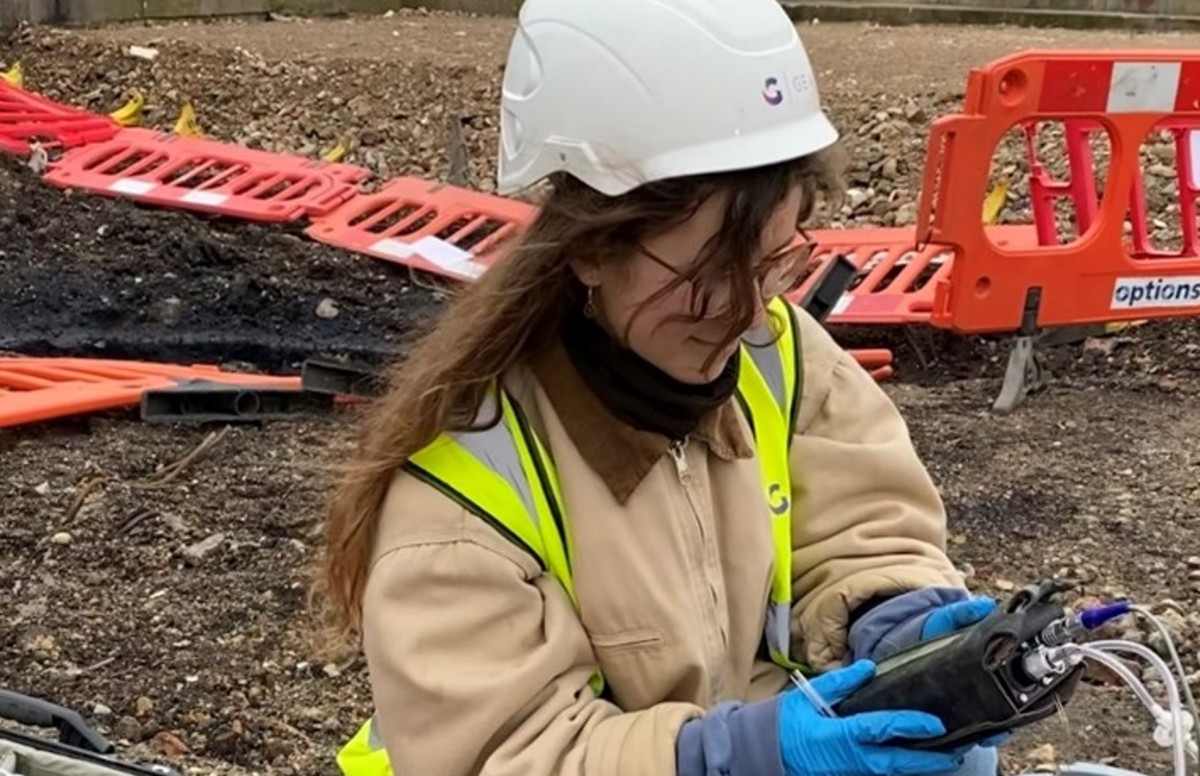Not known Details About Geotheta
Not known Details About Geotheta
Blog Article
The Best Strategy To Use For Geotheta
Table of ContentsSome Known Incorrect Statements About Geotheta The Definitive Guide for GeothetaSee This Report about GeothetaOur Geotheta StatementsThe Single Strategy To Use For Geotheta

They conduct site examinations, accumulate samples, do research laboratory tests, and analyze data to review the suitability of the ground for building projects - Tailings Engineer. Based upon their findings, geotechnical designers give recommendations for structure style, slope stability, retaining structures, and reduction of geotechnical threats. They team up with other professionals, such as engineers, structural designers, and building teams, to make sure that geotechnical factors to consider are integrated into the general job style and implementation
By examining the actions and buildings of soil and rock, they can recognize prospective geotechnical dangers such as landslides, dirt settlement, or slope instability. Their knowledge helps protect against failures or crashes that can threaten lives and building. Below are some thorough tasks and obligations of a geotechnical designer: Website Investigation: Geotechnical engineers conduct site investigations to collect information on subsurface conditions.
They analyze the data to comprehend the residential or commercial properties and habits of the dirt and rock, including their stamina, permeability, compaction characteristics, and groundwater conditions. Geotechnical Evaluation and Style: Geotechnical designers analyze the information accumulated throughout site examinations to analyze the stability and viability of the site for building tasks. They perform geotechnical calculations and modeling to examine variables such as birthing capability, negotiation, incline security, side earth stress, and groundwater circulation.
The 5-Second Trick For Geotheta
Structure Layout: Geotechnical designers play an important role in developing structures that can safely sustain the designated structure. They evaluate the dirt problems and load demands to establish the suitable structure type, such as superficial foundations (e.g., footings), deep foundations (e.g (https://www.abnewswire.com/companyname/geotheta.com_139529.html#detail-tab)., piles), or specialized techniques like soil enhancement. They take into consideration factors such as settlement limitations, birthing capability, and soil-structure communication to create optimal foundation styles
They assess construction plans, screen site activities, and carry out area assessments to validate that the style suggestions are followed. If unanticipated geotechnical issues develop, they evaluate the scenario and supply suggestions for remediation or changes to the design. Danger Analysis and Reduction: Geotechnical engineers evaluate geotechnical hazards and risks related to the job site, such as landslides, liquefaction, or soil erosion.

Cooperation and Interaction: Geotechnical engineers function carefully with other experts involved in a job, such as architects, architectural designers, and construction teams. Efficient interaction and partnership are vital to integrate geotechnical factors to consider right into the general task design and building and construction process. Geotechnical designers offer technical experience, answer queries, and make certain that geotechnical demands are met.
Geotheta Fundamentals Explained
Here are some kinds of geotechnical engineers: Foundation Designer: Foundation designers concentrate on developing and assessing structures for structures. They evaluate the soil problems, load demands, and website features to determine the most ideal structure type and layout, such as superficial structures, deep structures, or specialized strategies like pile foundations.
They assess the variables affecting incline security, such as soil buildings, groundwater problems, and slope geometry, and establish strategies to protect against slope failures and mitigate threats. Quake Designer: Earthquake designers concentrate on evaluating and creating frameworks to withstand seismic pressures. They assess the seismic risk of a site, examine dirt liquefaction potential, and create seismic design requirements to guarantee the safety and security and durability of frameworks throughout quakes.
They carry out field testing, gather samples, and assess the collected data to identify the dirt properties, geologic developments, and groundwater problems at a website. Geotechnical Instrumentation Designer: Geotechnical instrumentation engineers concentrate on tracking and determining the behavior of dirt, rock, and frameworks. They mount and preserve instrumentation systems that check variables such as soil negotiation, groundwater degrees, incline motions, and architectural displacements to assess performance and give early cautions of prospective concerns.
Not known Factual Statements About Geotheta
They carry out tests such as triaxial examinations, consolidation tests, straight shear examinations, and leaks in the structure examinations to gather information for geotechnical evaluation and layout. Geosynthetics Designer: Geosynthetics engineers concentrate on the design and application of geosynthetic products, such as geotextiles, geogrids, and geomembranes. They make use of these products to improve soil stability, strengthen slopes, offer water drainage solutions, and control erosion.
They tend to be investigative people, which indicates they're intellectual, reflective, and investigative. They are interested, systematic, sensible, analytical, and sensible. Some of them are likewise social, meaning they're kind, generous, cooperative, individual, caring, helpful, compassionate, skillful, and friendly - Engineer of Record.
In the office setting, geotechnical engineers make use of specialized software application tools to perform calculations, create styles, and examine data. They prepare records, testimonial task specifications, connect with customers and employee, and coordinate task activities. The workplace setting supplies a helpful setting for research, evaluation, and cooperation with other specialists involved in the task.
Some Known Details About Geotheta
They regularly check out project websites to carry out website investigations, evaluate geotechnical conditions, and gather data for analysis. These brows through entail taking a trip to various areas, sometimes in remote or tough terrains. Geotechnical designers may do soil tasting, conduct examinations, and screen building and construction tasks to make sure that the geotechnical elements of the job are being carried out appropriately.
Geotechnical designers additionally function in specialized geotechnical laboratories. In these facilities, they perform experiments, carry out tests on soil and rock Recommended Site samples, and examine the design properties of the materials. Geotechnical lab engineers function extensively in these environments, taking care of testing devices, running instruments, and tape-recording data. They team up with various other lab staff to guarantee accurate and reliable testing results.
Report this page